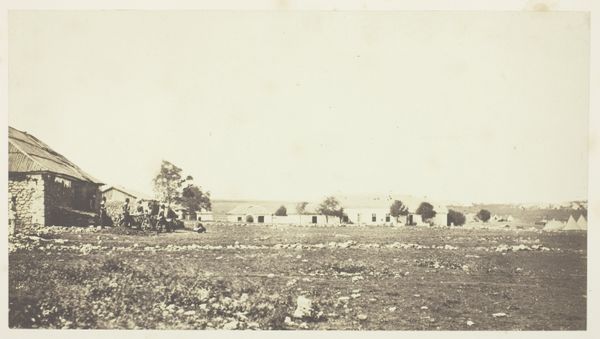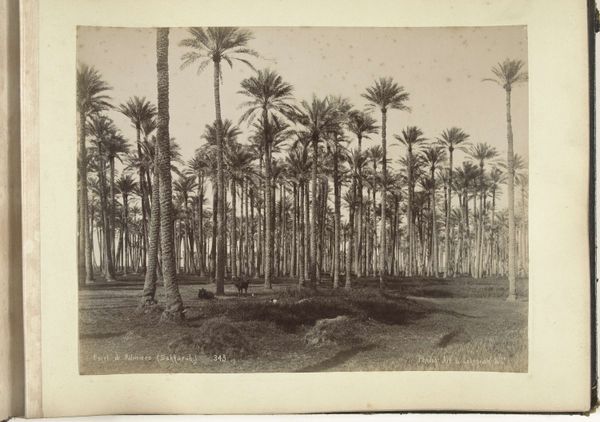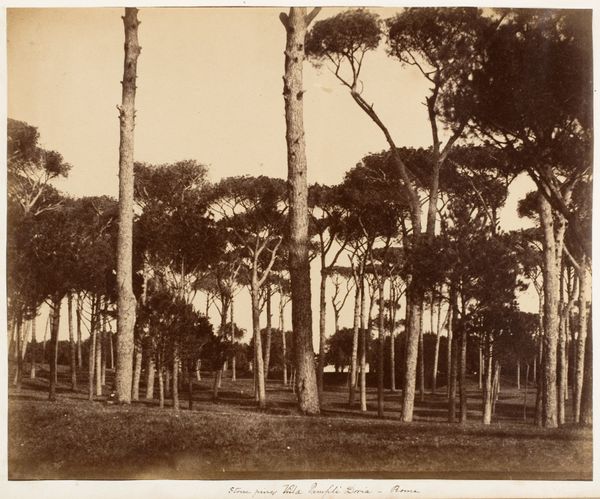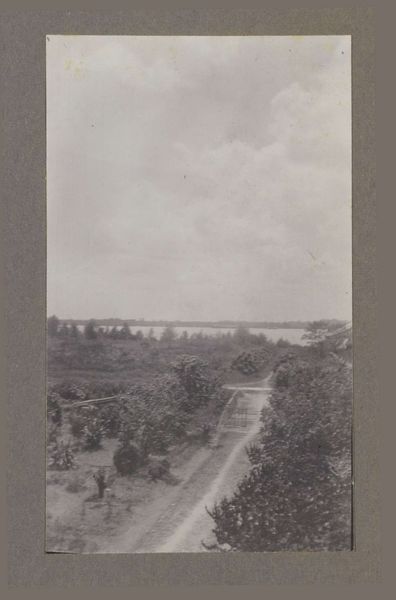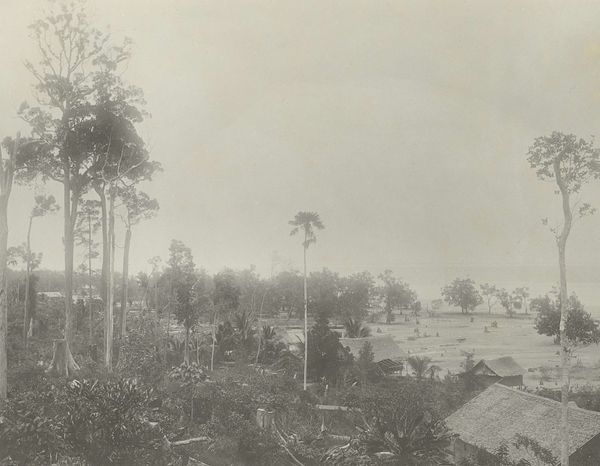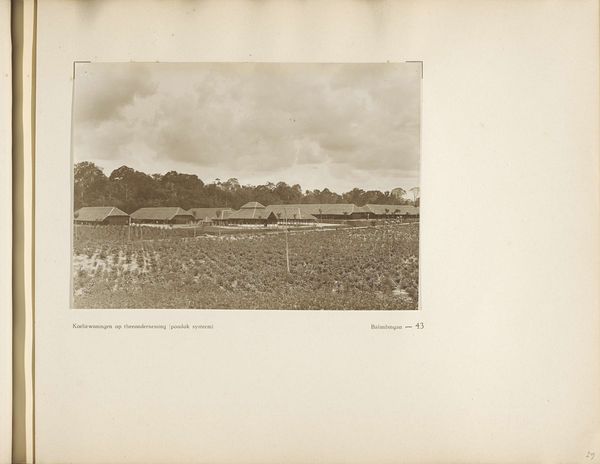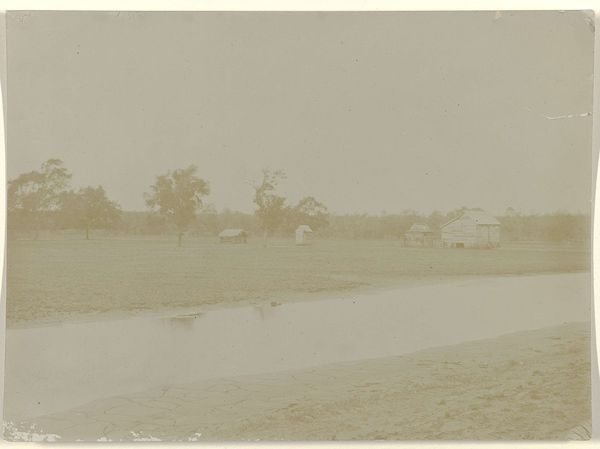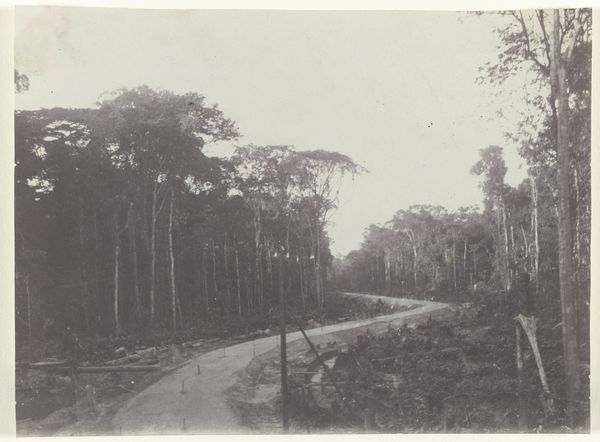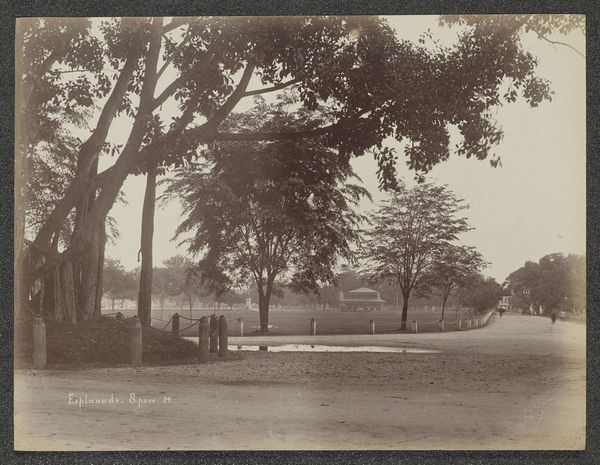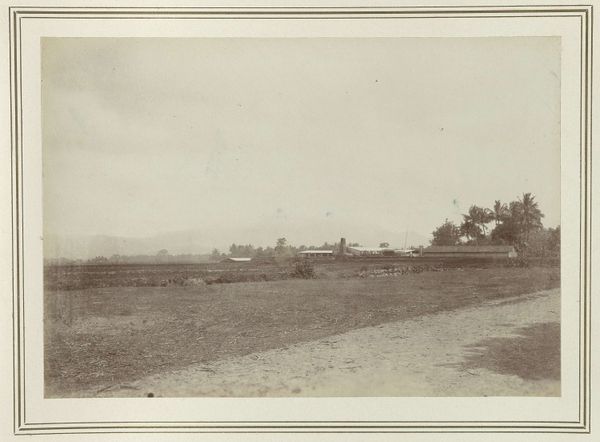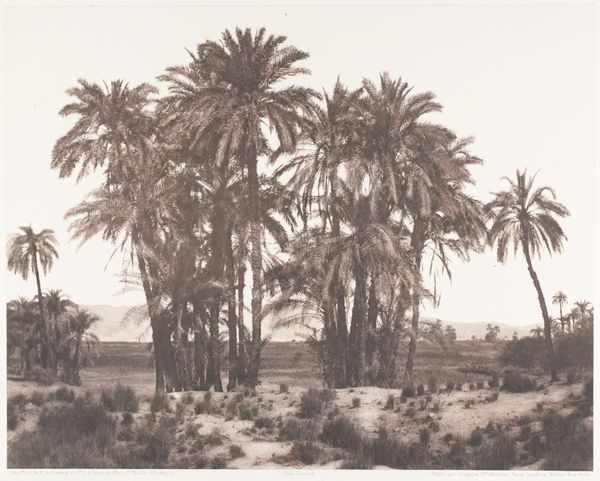
Dimensions: height 74 mm, width 111 mm
Copyright: Rijks Museum: Open Domain
Editor: Here we have Hendrik Doijer’s photograph, “Mauritiuspalmen Republiek-Berlijn,” taken sometime between 1903 and 1910. It’s a landscape featuring palm trees, and the tonality lends it a rather melancholic mood. What catches your eye about it? Curator: It’s fascinating how photography at the turn of the century was caught between imitating painting and forging its own path. Notice how Doijer utilizes the capabilities of photography, not to showcase detail or realism, but to evoke a specific mood tied to place. Think about the industrial processes necessary to produce photography; consider how this accessibility changed who could create and consume images. Editor: So, rather than a direct representation, it's about the cultural moment and how photography changed image-making? Curator: Precisely. Consider the title: linking "Mauritiuspalmen" with "Republiek-Berlijn". What is the cultural impact of this juxtaposition? Palm trees aren’t native to Berlin. This hints at colonial connections, perhaps a longing for the exotic fueled by imperialism, yet grounded in the "republic," a burgeoning industrialized society. Editor: So it's not just a pretty picture, but a statement about the intersection of industry, colonialism, and even a longing for another place through image production? Curator: Exactly! The very materiality of the photographic print, mass-produced, carries these loaded signifiers, impacting not only art, but also the broader visual culture. It points to power structures embedded in the act of representation itself, even back then. Editor: That's given me a lot to consider about photography’s role in shaping perceptions beyond just documenting reality. Curator: Indeed, examining art through its means of production reveals complex societal forces at play.
Comments
No comments
Be the first to comment and join the conversation on the ultimate creative platform.
